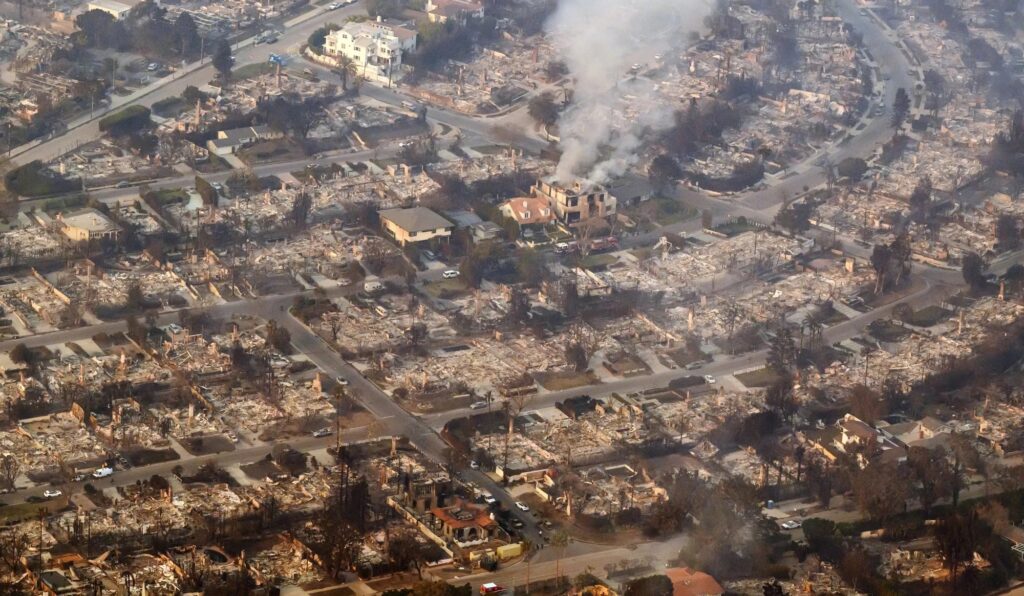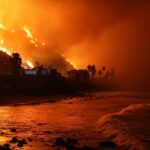By Trevor Neilson
In the aftermath of the horrific Palisades Fire, which claimed lives, destroyed thousands of homes, and upended entire communities, Malibu faces a profound choice: Do we rebuild as we always have, or do we chart a bold new path that prioritizes resilience in the face of mounting climate risks?
This is no ordinary rebuilding moment. Wildfires, once a seasonal threat, are now a year-round crisis fueled by climate change. Rising temperatures, prolonged droughts, and erratic weather patterns have turned California’s landscapes into a tinderbox. Malibu, with its stunning beauty and proximity to fire-prone areas, finds itself on the frontlines of this crisis.
But this isn’t a problem without solutions. We’ve seen that fire-resistant building design can make the difference between survival and destruction. The time to embrace these practices is now, and the city must lead the way with bold policy measures that incentivize resilience.
Malibu’s Climate Emergency
Malibu is no stranger to the realities of climate change. In 2019, the Malibu City Council declared a climate emergency, recognizing the increasing threats of wildfires, drought, and sea level rise. The resolution called for a “regional collaboration on an immediate just transition and emergency mobilization effort to restore a safe climate.” Councilmembers Skylar Peak and Mikke Pierson spearheaded this declaration, urging the surrounding cities in the Las Virgenes-Malibu Council of Governments to join in the effort.
This declaration was more than symbolic; it was a recognition that climate change is no longer a distant threat but an immediate challenge shaping our lives. In the years since, the urgency of this declaration has only grown. Fires like Woolsey in 2018 and now the Palisades Fire in 2025 have underscored the stakes.
Lessons in Resilience
Even amidst the destruction, there are powerful lessons to be learned. Certain homes in Pacific Palisades and other Los Angeles neighborhoods withstood the recent inferno thanks to fire-resistant designs. Features like vegetation-free zones, solid concrete perimeter walls, metal roofs with fire-resistant underlayment, and Class A-rated materials were not mere luxuries—they were lifesaving investments.
For Malibu, these examples offer a roadmap to the future. Fire-resilient design is not just an architectural choice; it’s a moral and practical imperative. However, implementing these measures can be costly, especially for individual homeowners. This is where the city must step in to ensure resilience is accessible to all.



Policy Solutions for a Fire-Resilient Malibu
To build a safer, more resilient Malibu, the city should adopt a comprehensive strategy that includes:
- Tax Incentives for Fire-Resistant Design
Homeowners and developers who incorporate fire-resistant materials—such as metal roofing, non-combustible siding, and tempered glass windows—should receive substantial tax breaks or rebates. This approach mirrors successful models like the federal Low-Income Housing Tax Credit, which mobilizes private investment for public benefit. - Fast-Tracked Permit Approvals
Time is critical when rebuilding after a disaster. Malibu should establish expedited approval processes for projects that meet stringent fire-resistant standards. This would reduce bureaucratic delays while encouraging safer building practices across the city. - Community Education and Partnerships
Malibu should partner with architects, builders, and nonprofit organizations to educate residents about fire-resistant design. Workshops, grants, and informational campaigns could empower homeowners to retrofit existing structures or build smarter from the ground up. - Expanded Defensible Space Programs
Beyond individual properties, Malibu must prioritize community-wide fire prevention measures. Maintaining defensible space around neighborhoods, creating firebreaks, and managing vegetation are essential steps to mitigate wildfire risks.
Resilience as Public Safety
Malibu’s 2019 climate emergency declaration highlighted the need for bold action to address the climate crisis. Now, that declaration must translate into tangible changes in how we build and prepare. Resilience is the most critical form of public safety in this new era. A fire-resistant home isn’t just a private asset; it’s a public good. Each structure that survives a wildfire reduces the strain on emergency responders, minimizes environmental damage, and protects the broader community.

A Call to Action
The Palisades Fire is a painful reminder of our vulnerabilities, but it also presents an opportunity to rebuild with intention and foresight. By incentivizing fire-resistant construction through tax benefits, streamlined approvals, and public-private partnerships, Malibu can lead by example in creating a safer, more sustainable future.
The climate emergency is no longer a distant concept—it’s here. And resilience must become our guiding principle. Malibu’s history and identity are rooted in its natural beauty and close-knit community. By embracing fire-resistant design, we ensure that Malibu not only survives but thrives in the face of climate change. The time to act is now.





Leave a Reply